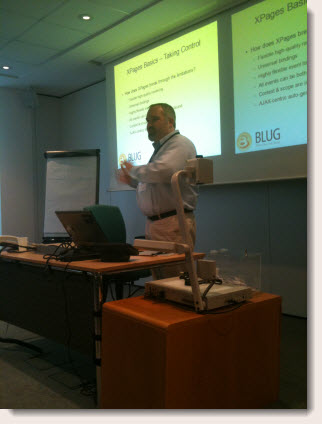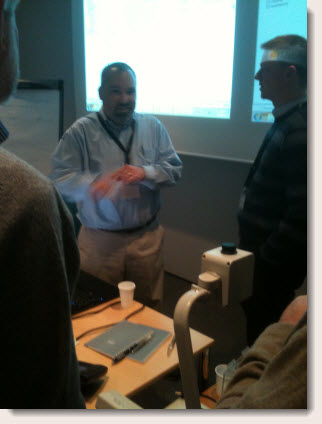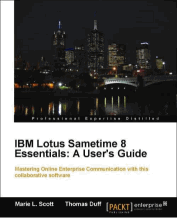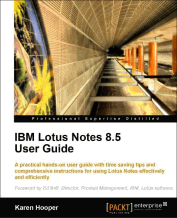BLUG – 26.10.2010
Attended yesterdays BLUG event at the IBM Forum, Bourgetlaan 42, Zaventem (Brussels). As always, the event was well attended. According to Theo Heselmans 80 of 100 registered persons showed up.
This is a real good result. Don’t forget it was an event with 2 sessions on a working day.
There was a half hour session run by RIM ( sorry, forgot the name of the speaker ). Blackberry Express for Domino was announced to be available on 02-Nov-2010.
Also RIM presented the brand new BLACKBERRY PLAYBOOK. This is another example where product names do not translate well into other languages. When I heard “playbook”, I immediately thought: “An enterprise-ready gamepad??” .
It’s s not a gamepad in the first place although I guess that it will not take long until the first games will be available for this nice tablet pc.
Next on the agenda was Nathan T Freeman. After he was introduced by Theo, someone in the audience asked what the T stands for. Nathan’s first (logical) answer was “THE”.


Nathan had 2 full hours to talk about the XPages Extension Library published on OpenNTF. I must admit that I already had downloaded the extension and also clicked thru the samples application that is available for download on the OpenNTF website, too.
Despite this, I was stunned when Nathan talked about all this cool stuff. Maybe this was the reason, why I completely forgot to spend some serious applause during the session. Everyone was very quiet indeed.
The (social) networking started right after the session. Not sure how long the bar was opened. I had to leave at about 6:30PM and drove the 250km home all the way thinking of which part of the extension I could usei in the intranet application I’m working on at the moment.

